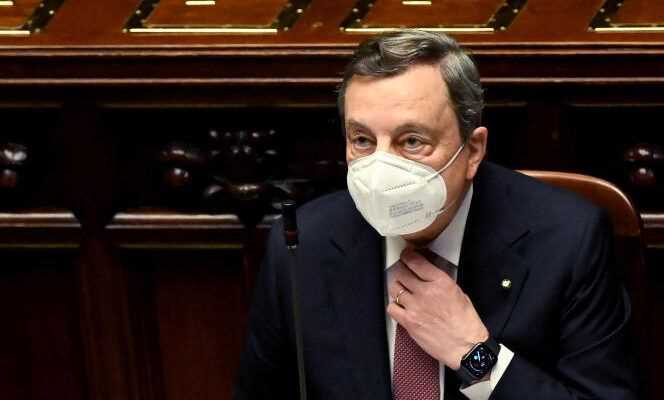The “Draghi experience” began as a classic of Italian parliamentarism. Faced with an institutional blockage occurring in the midst of a crisis situation, at the heart of the Covid-19 pandemic, the President of the Republic notes the absence of a classic solution and summons an apolitical figure, placed above the parties, to bring out the country of the rut. After Carlo Azeglio Ciampi (1920-2016) in 1993, Lamberto Dini in 1995 and Mario Monti in 2011, it is the former Governor of the Bank of Italy and former President of the European Central Bank (ECB) Mario Draghi that the President Sergio Mattarella charged with forming a government on February 2.
With his predecessors, Mario Draghi, a graduate of the Massachusetts Institute of Technology (MIT), shares a high profile economist profile and a solid legitimacy in the eyes of business circles, including internationally. But the comparisons end there. Because the circumstances are quite different. Where his predecessors had the primary mission of reassuring investors and controlling deficits, the former central banker was chosen for his supposed ability to respond to the opposite challenge: that of spending in the most efficient way possible. 191.5 billion euros allocated to the country under the European recovery plan decided in the summer of 2020, after the outbreak of the Covid-19 pandemic.
After three decades of public underinvestment caused by repeated austerity cures, Italy sees a golden opportunity to reverse the trend, and it is important not to miss it. This is the mandate given to Mario Draghi by almost all of the country’s political forces – with the exception of the sovereignists of Fratelli d’Italia.
134 investments and 63 reforms initially
To consolidate this very broad base, the former president of the ECB set up a government including political leaders of all stripes, including from the League of Matteo Salvini (far right). However, more “technical” profiles were chosen to occupy the positions directly concerned by the allocation of European funds. Daniele Franco, former Bank of Italy (Minister of the Economy and Finance), Vittorio Colao, CEO of Vodafone between 2008 and 2018 (innovation and digital transition), or the physicist Roberto Cingolani (ecological transition) are thus in first line on these records, and they respond only to Mario Draghi.
The “political” ministers are forced to accept this state of affairs, with more or less good grace. Behind the scenes, the leaders of Matteo Salvini’s League can complain that they are not involved in the decisions and that they have to endorse in the Council of Ministers decisions that they have barely had time to take note of, but they have little control over them. choice. Because, since his arrival, Mario Draghi has one goal: to go fast. Very quickly. He acts by ministerial decree, in order to avoid long parliamentary debates and to implement his Piano Nazionale di Ripresa e Resilienza (PNRR), without wasting a minute. This provides, in its first sentence, 134 investments and 63 reforms aimed at modernizing the Peninsula with 191.5 billion from Europe. This, by targeting the bottlenecks in the economy.
You have 67.87% of this article to read. The rest is for subscribers only.
